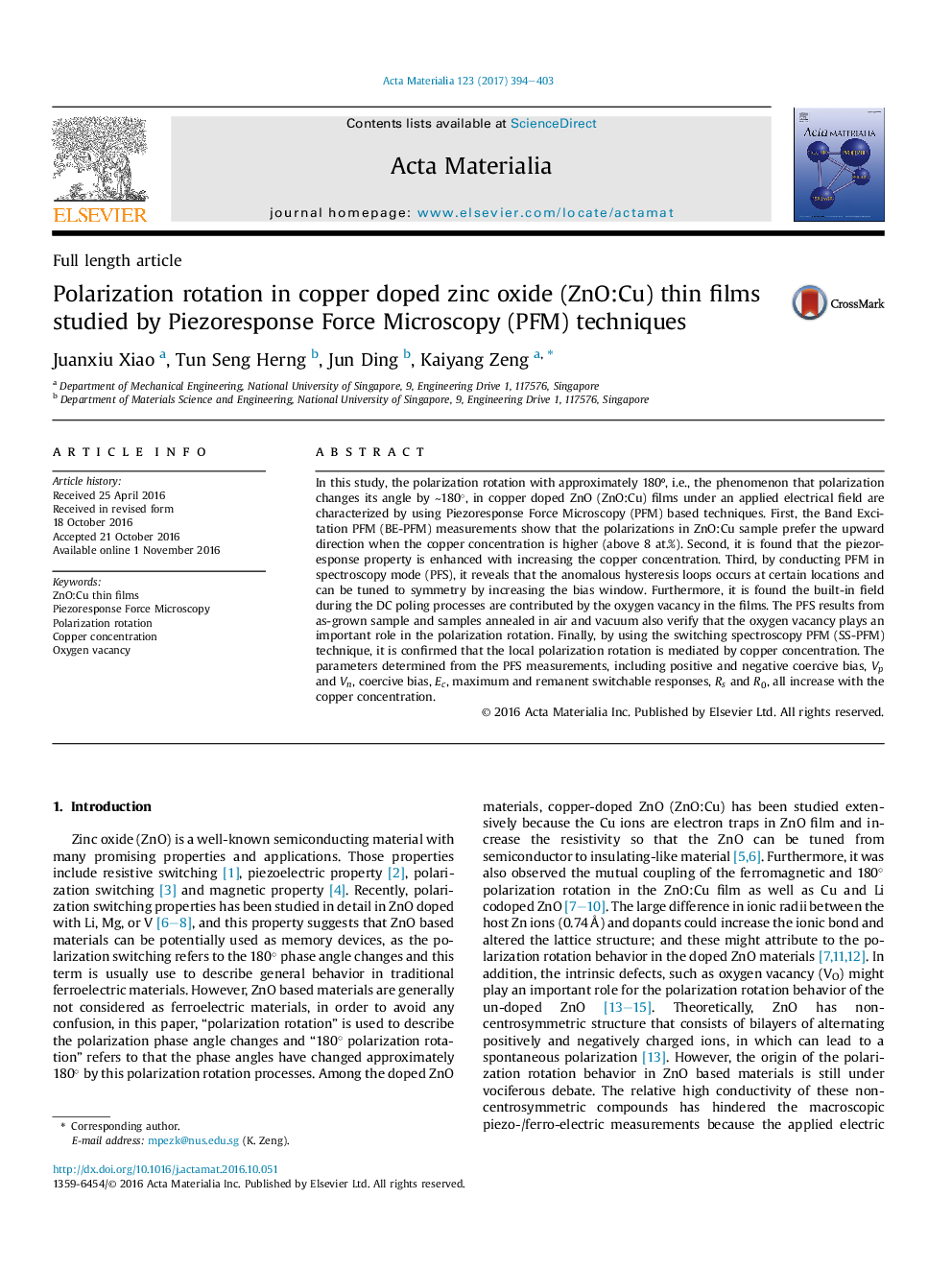| Article ID | Journal | Published Year | Pages | File Type |
|---|---|---|---|---|
| 5436634 | Acta Materialia | 2017 | 10 Pages |
In this study, the polarization rotation with approximately 180â°, i.e., the phenomenon that polarization changes its angle by â¼180°, in copper doped ZnO (ZnO:Cu) films under an applied electrical field are characterized by using Piezoresponse Force Microscopy (PFM) based techniques. First, the Band Excitation PFM (BE-PFM) measurements show that the polarizations in ZnO:Cu sample prefer the upward direction when the copper concentration is higher (above 8 at.%). Second, it is found that the piezoresponse property is enhanced with increasing the copper concentration. Third, by conducting PFM in spectroscopy mode (PFS), it reveals that the anomalous hysteresis loops occurs at certain locations and can be tuned to symmetry by increasing the bias window. Furthermore, it is found the built-in field during the DC poling processes are contributed by the oxygen vacancy in the films. The PFS results from as-grown sample and samples annealed in air and vacuum also verify that the oxygen vacancy plays an important role in the polarization rotation. Finally, by using the switching spectroscopy PFM (SS-PFM) technique, it is confirmed that the local polarization rotation is mediated by copper concentration. The parameters determined from the PFS measurements, including positive and negative coercive bias, Vp and Vn, coercive bias, Ec, maximum and remanent switchable responses, Rs and R0, all increase with the copper concentration.
Graphical abstract(a) DART-PFM phase image after DC writing processes with â15 V on a 4 Ã 4 μm2 area and +15 V on 2 Ã 2 μm2 center area of ZnO:Cu film sample (2 at.%, deposited at PO2 = 2 Ã 10â4 Torr); (b) SS-PFM coercive bias mapping image of the same sample.Download high-res image (894KB)Download full-size image
